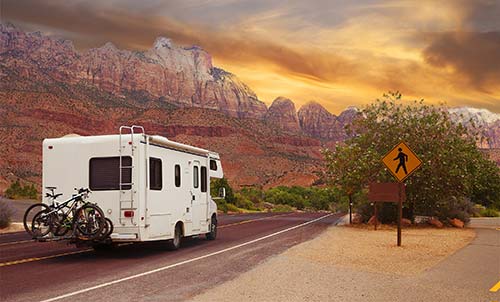Credit: Recreation Vehicle Industry Association
RV shipments for 2017 totaled 504,599 units, an increase of 17.2% compared to 2016. The growth this year makes eight consecutive years of wholesale shipments growth since the industry has bounced back from effects of the Great Recession.
In 2016, RV shipments totaled 430,691 units, a gain of 15.1% over the previous year. This was the seventh consecutive annual increase.
Recent shipments history:
YEAR
RV SHIPMENTS
PERCENTAGE CHANGE
2017
504,599
17.2%
2016
430,691
15.1%
2015
374,246
4.9%
2014
356,735
11.1%
2013
321,127
12.4%
2012
285,749
13.3%
Reasons for Industry Growth
RVs support a balanced and active lifestyle. In a Harris Interactive survey, owners reported that RV travel enables them to experience nature and outdoor activities and enjoy quality family time. RVers reported stronger bonds with loved ones and benefits to children. RVers also cited healthier eating on the road, sleeping their own beds, and having their own bathroom facilities as advantages of RV travel.
RV ownership and travel is a great value. A 2014 Vacation Cost Comparison prepared by PKF Consulting USA showed that a family of four can save 27-62% on vacation costs by traveling in an RV, even when factoring in ownership costs and fuel. For a two-person traveling party, savings are 11-48%. Even when fuel prices rise, more than 80% of RV owners say their RV vacations cost less than other forms of travel.
RVs have uses as diverse as the people who own them. In addition to vacation travel, owners use RVs for tailgating, travel with pets, business, outdoor sports and other leisure activities.
Shorter trips closer to home. Research shows that RVers spend more time enjoying campgrounds and less on the road to save fuel and time. More than 90% of RVers take three or more mini-vacations per year. With more than 16,000 campgrounds nationwide, it’s easy for RVers to stay closer to home.
Other Factors Behind RV Industry Growth
IRS tax deduction. For most RV buyers, interest on their loan is deductible as second home mortgage interest.
RV manufacturers are offering innovative new products that offer an optimal mix of size, amenities and price for today’s budget-conscious consumers. Manufacturers are producing lightweight trailers and smaller, fuel-efficient motorhomes. Green technologies such as solar panels and energy efficient components are appearing on an increasing number of RV models.
Lifestyle trends continue to spur demand for RVs. RV owners overwhelmingly said in recent surveys that their RVs make it easier to take more frequent weekend getaways or mini-vacations that accommodate busy family schedules.
Go RVing ads build demand. The industry’s Go RVing advertising campaign continues to stoke consumer interest in RVs and the RVing lifestyle. The “AWAY” television and print ads are appearing on TV and in print, and Go RVing is partnering with music festivals and sports leagues to expand the campaign’s reach. Details: GoRVing.com.
Indicators for Future Growth
RV ownership has reached record levels. More than nine million households now own an RV – the highest level ever recorded – a 16% increase since 2001 and a 64% gain since 1980.
Population and demographic trends favor long-term RV market growth. Buyers aged 35-54 are the largest segment of RV owners, according to the 2011 University of Michigan study of RV consumers commissioned by RVIA.
Baby boomers entering retirement. RV sales are expected to benefit as aging baby boomers continue to enter the age range in which RV ownership has been historically highest.
WEBSITES: www.RVIA.org www.GoRVing.com
MORE INFORMATION
Kevin Broom
Director of Media Relations
Recreation Vehicle Industry Association
703-620-6003, ext. 304






